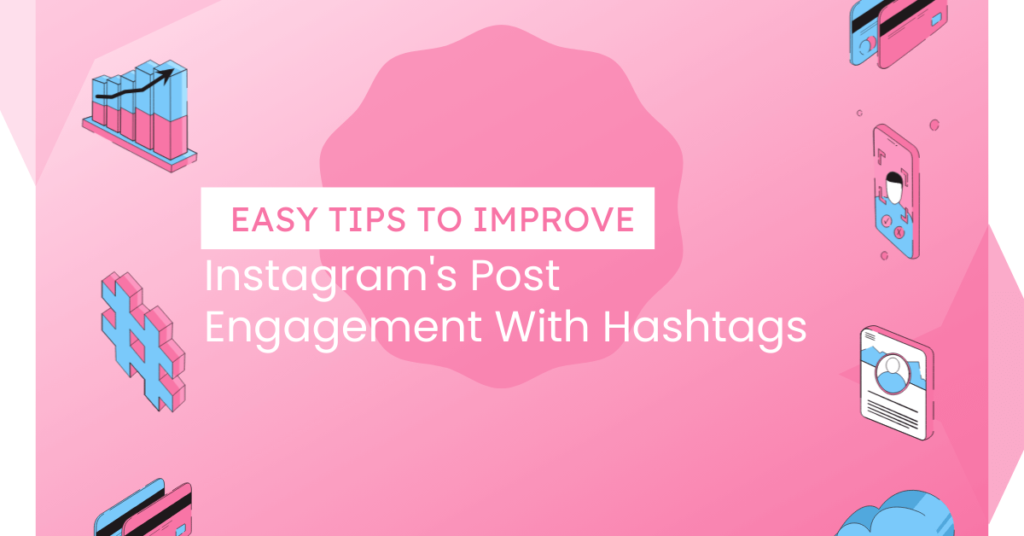Since the advent of search engines, writers and companies have mastered SEO, the subtle science of how to boost search results and improve web traffic. However, cheap and easy-to-use copywriting tools based on GPT-3 have recently appeared, and this has completely changed the rules of the game.
Spacebar Collective CMO Chris Twieten shared his predictions on how AI copywriters will change SEO and copywriting in general. We publish a translation of his article.
While AI copywriting has been slowly evolving over the years, until recently, the results were not good enough to be taken seriously. It is only now that we are beginning to see the consequences of companies massively using AI-generated written content.
Algorithm-generated text is already being used to create SEO content, although Google claims it penalizes such content. However, AI tools have far more uses than the tactical game of cat and mouse that companies and SEOs play with Google.
A large selection of training courses to promote sites in search engines can be found in the catalog of courses on SEO.
Chris Twieten, CMO of Spacebar Collective, predicts that in the future, AI copywriting tools will be able to significantly increase not only the productivity, but also the quality of copywriters. At the same time, this will increase the demand for qualified authors and editors.
Today, the widespread adoption of tools like Jasper and Copy AI raises new questions: how can AI copywriters compare to humans? How is the growing use of AI writing tools affecting SEO and search results? And, most importantly for companies and creators, how can you take advantage of this AI revolution?
Growth in the number of texts produced by GPT-3
GPT-3 is a neural network machine learning model created by OpenAI that is used to translate written commands and generate text. GPT-3 is basically AI for the layman: although it has been trained on absurdly large datasets—nearly 500 billion tokens encrypted in byte pairs—and tuned to over 175 billion machine learning parameters, GPT-3 can be easily used by just about anyone.
The model requires only a small amount of input text to produce relevant and complex text.
In response, a slew of automated copywriting apps have emerged that claim to create high-quality content. Now these tools are changing SEO search.
For many years, the SEO industry has been outsourcing cheap copywriting to India and the Philippines. In recent years, many freelancers from these countries have begun to use AI to create huge amounts of content. Why shouldn’t they? Google is ranking AI-generated texts in search results, and growing demand means better performance could make freelancers more money than ever before.
It is important to note that although this is mostly mediocre content, AI tools can create content that is indistinguishable from human writing. But while AI-generated content is usually grammatically correct, artificial copywriters aren’t always accurate on the facts. This increases the likelihood that the output will be misinformation or fake.
While GPT-3 has the potential to revolutionize content creation, we are just beginning to understand the possibilities of this tool.
How to Use AI Copywriting Tools as Collaborators
While algorithms are playing an increasing role in content creation, there are new ways for human copywriters to stay relevant. The GPT-3 promises unparalleled performance and lightning speed. But the best results to date are obtained by those who use AI to create content and specialists – editors and authors. AI copywriting will affect more than just search strategy and SEO.
While there are many ways to work with these tools, they can be summarized in a few basic processes.
- Copywriting. Write an AI request that includes the title of the document, a summary, and a suggested tone.
- Writing content for the blog. Write an AI query that includes the document title, section headings, and tone. Add a blank line after each heading and write content for each section separately.
- Editing. Copy and paste the text into the AI output box. Highlight the text and use the “correct grammar” or “paraphrase” tools.
AI is a tool, and like any other tool, you need to use it properly to be effective. So AI copywriting tools can be a valuable asset for any writer. On average, without the help of AI, an experienced writer can safely write 2,000 words a day. By learning how to manage and edit content created by artificial intelligence, a writer can increase the result to 4-5 thousand per day, which allows you to be more productive with fewer bad results.
Grammatical Structure
AI copywriters can also be used to help aspiring writers spot grammatical errors and suggest structural changes that polish and bring the text to life.
Over time, this allows you to improve sentence structure, grammar, vocabulary and increase the value of the author in the market.
There are many AI copywriting tools out there, including Copy.ai, Jasper, GrowthBar, Copysmith, and Writesonic. Each of them has its own strengths and weaknesses. Some of them are better at grammar and spelling, while others can help with high-level research and conceptualization of content.
Five popular AI copywriting tools
- Copy.ai . Specializes in sales texts and is available in 20 languages.
- Jasper . Focuses on creating large forms of high quality content. Compared to other tools, it is more accessible for beginners due to the choice of templates.
- Growthbar . Creates content summaries, blog posts, and meta descriptions, making it popular with SEO professionals.
- Copysmith Produces marketing content of all types, but is especially good at sales copy and product descriptions. Often used by ecommerce companies.
- Writesonic . Competes with Jasper in the area of large content forms. It stands out for the ability to create video scripts for YouTube.
In any case, the conclusion is the same: AI copywriters do not replace human writers – they are best used as assistants in the work of people. This means that while they can help with text creation, you should not rely solely on them when creating text now.
Google and quality content search
Of course, one of the main uses for such tools is to create more content for less so that companies can rank higher in Google search. Given Google’s dominant position as a search engine, the company’s take on AI-generated content could make a huge difference to the industry.
When the industry publication Search Engine Journal ran a headline in April with the headline “Google says AI-generated content is against best practices,” it spooked SEOs around the world. After the article, many thought about what this means for the future of their projects and the industry as a whole.
But in fact, Google has been saying for years that it wants quality content in its search results and is developing technologies to fight spam. It is clear that Google is simply trying to prevent the use of low-quality content, which was a problem even before the widespread use of AI copywriters.
For example, back in 2011, a Google update called Panda (also known as Farmer) killed millions of pieces of spam content and affected 12% of all search results.
Google Algorithm Update
So will AI-written content be penalized? Most likely not – not yet. Miranda Miller, editor-in-chief of Search Engine Journal, believes that while Google’s algorithms cannot automatically detect content generated by a model like GPT-3.
Even if it is considered spam, there are many examples of successful sites filled with AI content. Google’s latest major algorithm update appears to be penalizing machine-generated content. At the same time, it seems that after fact-checking and human editing, the texts were perfectly accepted.
But while it’s safe to say that Google hasn’t learned how to detect machine-generated text for now, its ability will improve over time.
Since AI tools are trained in a specific way on a specific set of data, at the macro level they create uniformity in texts.
For example, if Jasper AI were used to describe every cooking-related keyword, future articles using the same AI to cover the same topics would look similar enough to make it easier for Google to detect the use of AI. At the very least, once Google has a large enough dataset, some patterns will emerge.
This is the basis of his business model – to index and analyze the entire Internet, so this type of pattern recognition is inevitable.
But will Google penalize AI content? Assuming people act the same as they did in the past, and assuming history repeats itself, this is very likely. If most of the internet is AI-generated and free from fact-checking, Google will likely moderate the results, as they did with the Panda/Farmer update.
This means that to avoid penalties, both SEOs and founders are likely to optimize their AI tools through collaboration with human editors and fact checkers.
Looking Ahead: What AI Advances Mean for the Written Word
What if the content generated by the algorithm is indistinguishable from human counterparts? The question is not even whether this will happen, but when it will happen.
For AI-enabled copywriters to bridge this technology gap, they will need more powerful language models, larger datasets, and quality control checks built into platforms. Not far off is the ability to quickly fact-check text content using the same technology that social networks use to prevent the spread of disinformation.
Very soon, in the next couple of years, the content production economy will undergo dramatic changes.
However, ironically, Spacebar Collective CMO Chris Twieten suggests that this shift will increase the demand for highly skilled human writers and editors in the future for a number of reasons.
AI advances in the long run
First, as individual AI copywriters become more and more popular, their results at the macro level will become more uniform in the long run. This will push Google to develop better search algorithms for generated texts and probably introduce massive penalties.
It will also mean that, without human assistance, much of the internet will feel more uniform than ever before. This is where dedicated human editors become especially important.
Second, AI-generated material is most useful as educational content, not investigative journalism. The need for journalists, independent researchers and writers will continue as AI copywriters improve. The blue ocean strategy in content will continue to gain momentum and lead to a new generation of professionals.
As the influx of AI texts increases competition in search results, content in previously untouched areas of knowledge will be in high demand. Wide open spaces, where new interests, new niches and new industries emerge, will become a platform for content specialists to work.
Finally, to diversify writing styles and make content more enjoyable to read, there will be AI copywriters who specialize in certain areas, styles, and professions. We have already seen that this is confirmed in various areas of marketing, where some platforms are better than others, for example, in email marketing or sales copy.
Creating high quality content will require writers and editors who work with AI copywriters. As such algorithms become more specialized, the demand for human participation in fact-checking and cross-checking AI results will grow. The combination of AI for content scaling and human editors for quality assurance is likely to become the industry standard.







